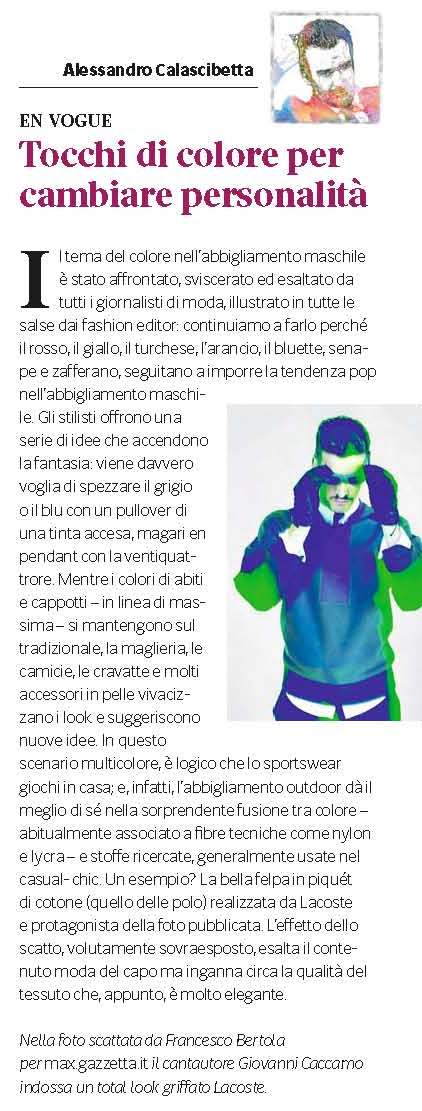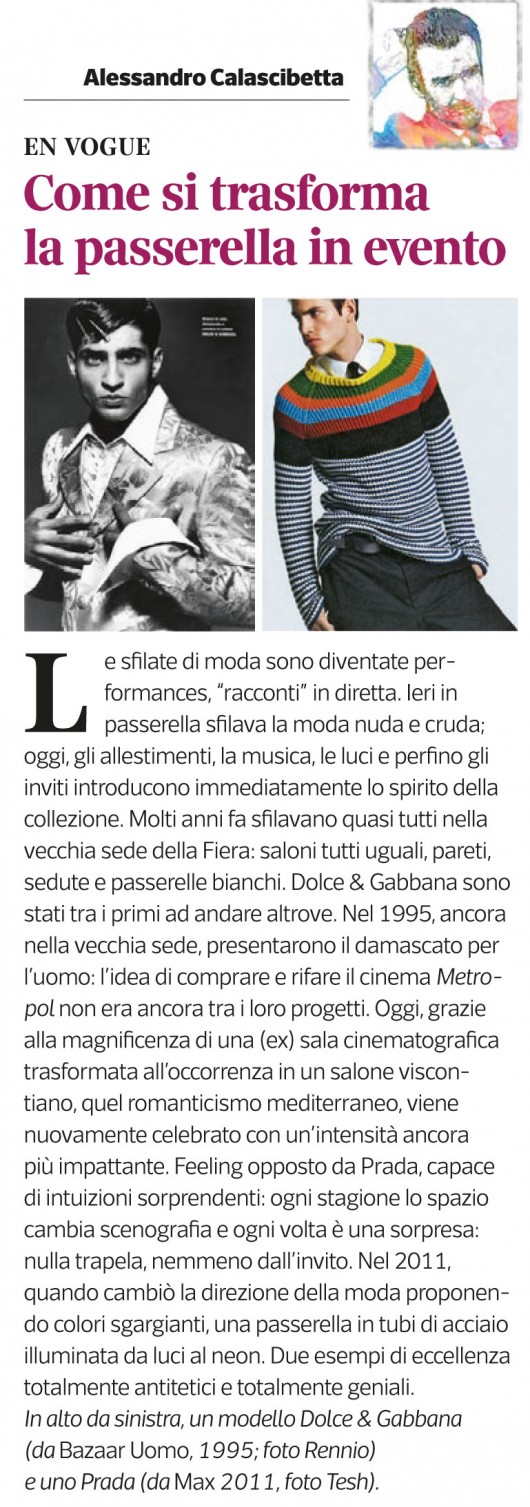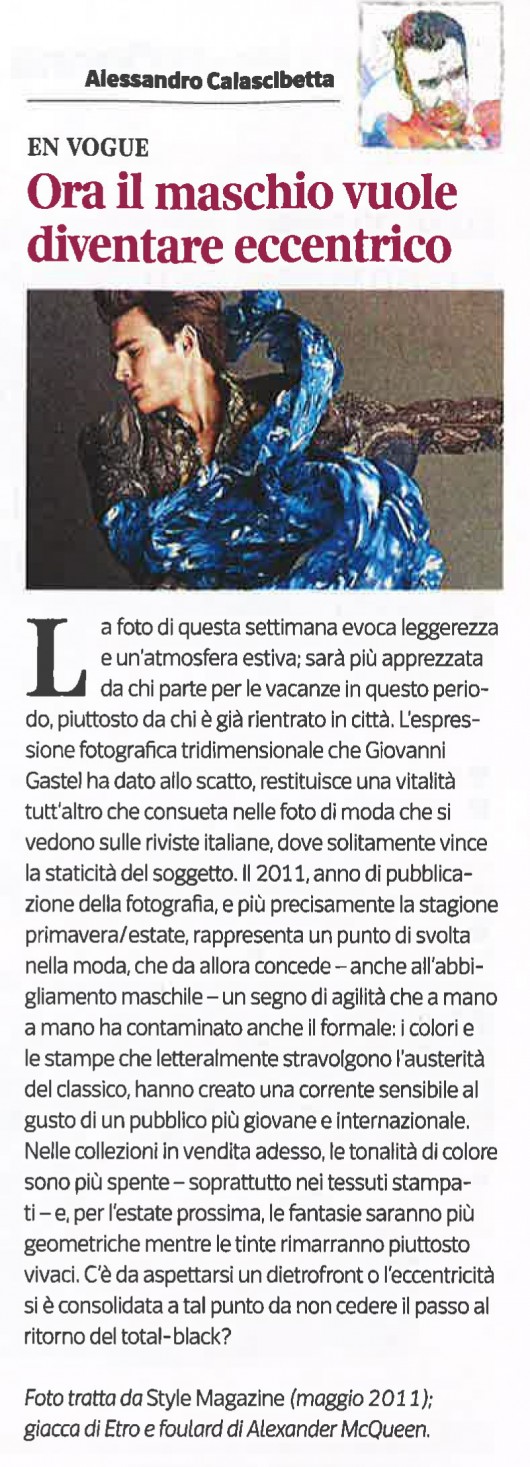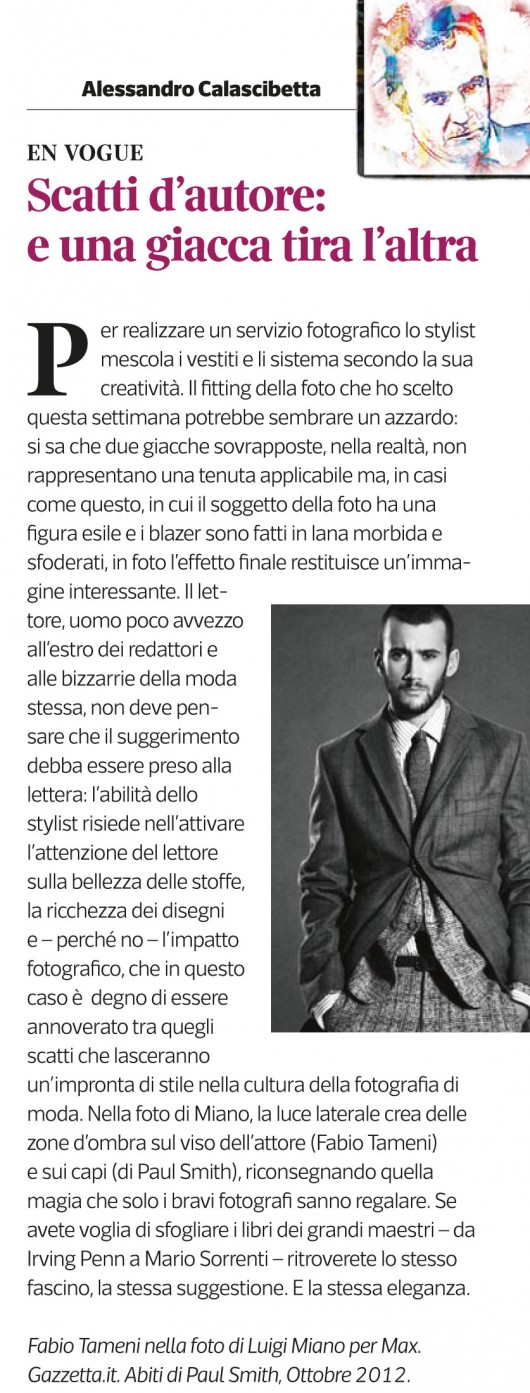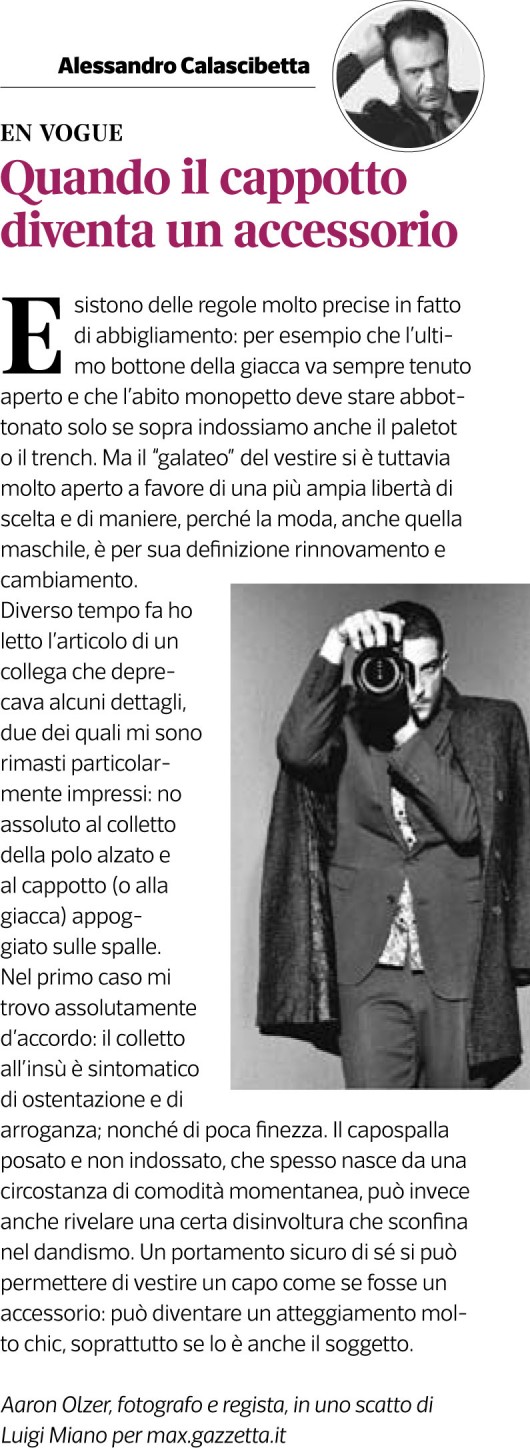SETTE MAGAZINE EN VOGUE TOCCHI DI COLORE PER CAMBIARE PERSONALITA’
Touches of colour to change personality. The subject of colour in menswear has been took on, exploited and enhanced by every fashion journalist, depicted in every way by fashion editors: we keep on doing it because red, yellow, turquoise, orange, blue, mustard and saffron yellow carry on dictating the pop trend for men. Designers offer several ideas that light up fantasy: we really want to break up grey or blue with a coloured pull, maybe matched with the briefcase. While colours of suits and coats – in the majority- stay on traditional, knitwear, shirts, ties and a lot of leather accessories brighten up the outfit and suggest new ideas. In this multicoloured scenario, the sportswear plays at home; and, infact, the outdoor wear does its best in the surprising fusion between colour – usually associated to technical fabrics like nylon and lycra – and fine fabrics, generally used in casual-chic wear. An example? The beautiful sweatshirt made of cotton piquè (the fabric of polo shirts) by Lacoste and protagonist of the published picture. The shot effect, intentionally overexposed, enhance the garment’s fashion content but tricks us about the quality of fabric that is, indeed, really elegant. In this picture by Francesco Bertola for max.gazzetta.it, the songwriter Giovanni Caccamo wears a total look by Lacoste.





